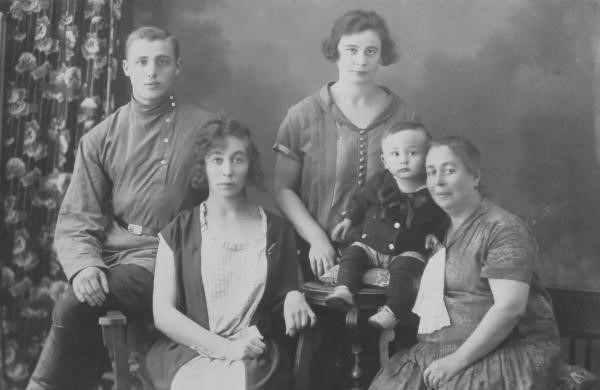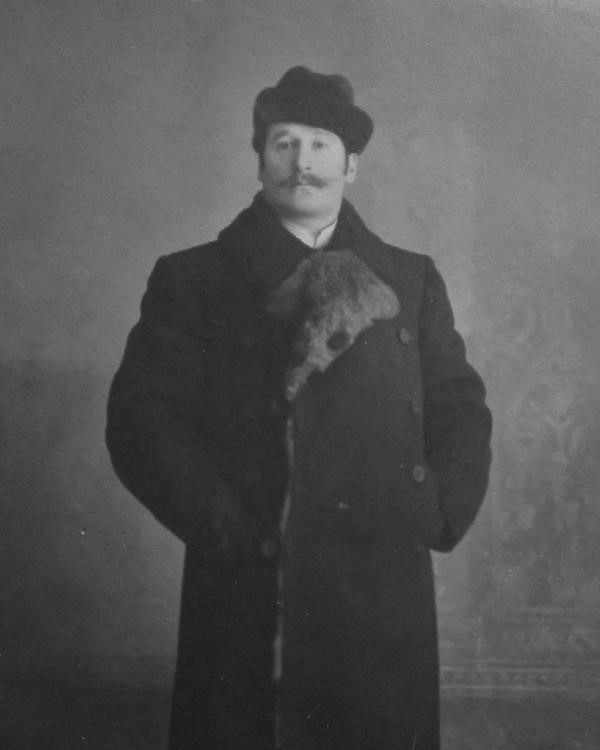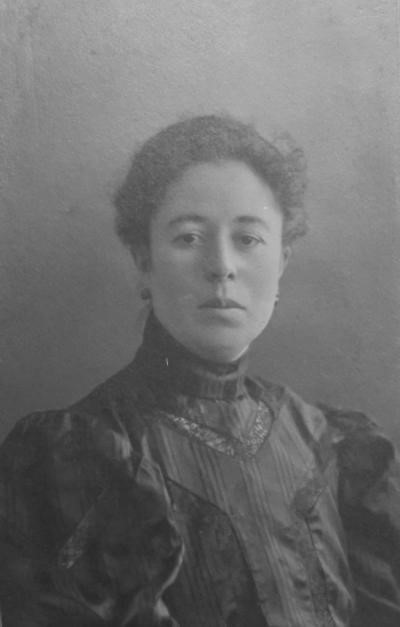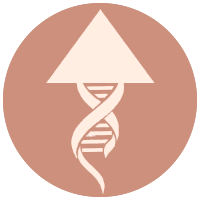
Work on collecting historical facts and reconstructing the Rawicz family tree took about four months. First, I turned to the origins of the name Rawicz. I managed to discover that Rawicz (Ravitz, Raivich, Raivitz) is a toponymic surname. These surnames originate from the name of the city (area) of residence of the first carriers of the name. It should be noted that the first time a surname was assigned was not at the moment of birth, but at the time of moving to another place of residence, as if answering the question “where are you from?”. I managed to establish that there are two versions of the origin of the name Rawicz. According to the first, it originates from the name of the city of Rawicz in the Prussian province of Posen (Poznan). In the 18th century, all residents of Posen were either Jews or Germans.
The other version suggests that the surname comes from the town of Reyovets in the Kholmsky district of Lublin province. From the archives, I learned that, in 1857, there were 824 Jews living in Reyovets. In the Russian Empire, Rawiczs mainly lived in such provinces as Vitebsk, Mogilev, Minsk and Vinnitsa. In the archives of Kazan, I found confirmation that the first Jews of Kazan were cantonists. They appeared in the late 1820s as members of the same battalion. I also learned that after a leave of absence, some Jews did not leave Kazan but actually settled there and began to engage in permitted trade.
Cantonists were young boys who were forcibly taken to serve in the tsarist army. In battalions, they were taught military craft. Then, the troops were waiting for them. After serving for a long time (25 years) in the Nikolaev army, the cantonists were given the right to live outside that Jewish settlement.
At first, the search for information was difficult because officially at that time there was no Jewish community in Kazan as such. All civil documents about events in the lives of Jews (marriages, divorces, births and deaths) were stored in various archives, many of which are still considered lost.
The registration of the Jewish community in Kazan officially took place 100 years after the beginning of its actual existence. Only after this registration did the rabbi receive the metric books.
My research into the Rawicz history began with the birth of Abram Moiseevich Rawicz in 1871. Therefore, the head of the family will be considered to be Abram’s father, Moses Rawicz, who was born before 1850. According to archival data, Moses had a wife, two daughters and a son, who I want to tell you about here.
Son Abram Moiseevich Rawicz was born in Kazan in 1871 to the family of a merchant of the first guild. At the age of 22, he married Feiga (1875 / b.), a Jewish girl from the Yudkevich family. She was a native of the city of Glukhov, Chernigov province. After marrying, Abram and his wife settled in Vyatka and they were engaged in the family business together with Feiga’s relatives, Uncle Alexander and brothers Noah and Mordukh. Abram participated in this business by purchasing flax from peasants and then sending it to the local spinning factory. Later, the material underwent chemical processing in Belgium and then the fabric was woven from this in Ireland. The actual sales took place in Russia, including in Vyatka, through the chain stores run by Feiga’s family. The second family business was also very interesting. It began with the process of buying skins and selling them in the very same chain stores.

Abram travelled throughout Siberia and purchased the skins of wild animals from local hunters. He then sent them to be cut and dressed. Siberian hunters only accepted gold and silver coins as currency so Abram carried with him a metal box with a double bottom. The secret compartment was filled with “gold” and served as a seat in the sleigh. Abram had a licence to carry a weapon, which he hid under his pillow.

Abram was a true Siberian man: tall (almost 2 metres), strong and powerful. Although he could afford to drink too much, he always remained in a sober state of mind. Abram lived for 52 years, having seen the world. Meanwhile, Feiga outlasted her husband by 17 years. She spent the end of her life with her daughter Rosa and son Sergei in Irkutsk where she ended up after Rosa’s unfair exile, which I will explain a little about below.
Abram and Feiga had 10 children: son Mikhail (1893 / b.), daughter Eva (1895 / b.), son Leonid (1897 / b.), daughter Rosa (1899 / b.), daughter Magdalene (1898), daughter Alexander (1901), son Isaac (1902), son Peter (1903), son Sergei (1906 g / r.) and daughter Tamara.
After reading several biographical works of the relatives, I was able to determine the sequence of births of Abram and Feiga’s children. The eldest child, son Mikhail, was born in 1893 in Vyatka. During the First World War, he fought and was captured by the Germans. Whilst in captivity, he worked in the village in conditions of slavery. There, he met a German woman, Clara, who worked with him. It was she who saved Mikhail from German oppression. At the age of 33, Mikhail married Clara. In the same year (1926), they had a son, Rudolph, and then a daughter, Laura. At the end of the War, the family moved to Vyatka. Unfortunately, they could not escape the fate of outcasts with German roots and shortly before the Second World War, Clara was exiled to Kazakhstan. Of course, Mikhail and his children followed her. In Kazakhstan, the couple raised a granddaughter from Rudolph’s son, Inna. Their daughter Laura lived to the age of 71 and she left this world in Moscow due to a problem with her auditory nerve. Mikhail passed away at the age of 77.
Abram’s daughter Eva Rawicz was born in the autumn of 1895 in Vyatka. In 1925, she married Abram Matlin at the age of 30. Abram had been born in March 1903 in Dvinsk in a family also exiled to Vyatka. He was eight years younger than his wife. Eva worked as a chief pharmacist and Abram as a shop manager at a local plant. Eva lived for a long time with her paternal aunt in Kazan where she graduated from the institute. Abram and Eva had a son, Raphael, in the summer of 1925. I learned that Raphael later married Sophia (born in 1927) and they subsequently emigrated to America and settled in New York. Eva lived a long life in Vyatka and died surrounded by her family in 1985, when she was 89 years old. Abram outlived his wife by 13 years.
Abram’s son Leonid was born in Vyatka in 1897. In 1924, at the age of 27, he married Nina. Nina came from Yaransk and was five years younger than her husband. She became a housekeeper. Physically, Leonid resembled his father: tall and stately. He ran a business in Vyatka and, when the Soviets came to power, he worked as a hairdresser. Towards the end of his life, Leonid lived in Moscow where he died in 1961 at the age of 63. Leonid and Nina had three sons: Yuri (1924 / b.), Vladimir (1927 / b.) and Valery (1932 / b.). Unfortunately, the eldest son Yuri was killed on the frontline in 1941. He was only 17 years old. Vladimir had no children but he lived a long life and died at the age of 85. By the end of his life, Valery was living in New York and he passed away there at the age of 85.
Abram’s daughter Rosa was born in Vyatka in 1899. She worked in the machine-building industry as a normaliser. Brother Leonid organised an enterprise in which Rosa also took part. This was the reason for her exile to Irkutsk. Her brother Sergei and mother Feiga followed her in order to help. Despite the fact that Rosa had outstanding mental abilities, she had to undertake physically difficult and far-from-female work. Rosa had no children of her own. Later, she let Gennady into her life, considering him to be her son, and his children her grandchildren. At the age of 75, Rosa died of pneumonia.
Following Rosa, a daughter, Magdalene, appeared. She was born in February 1899 in Vyatka. Aged 24, Magdalene married Zalman Becker, a very devout person who regularly read the Torah. Magdalene was an excellent hostess and knew how to cook very tasty meals. In the same year (1924), Magdalene gave birth to a daughter, Mira, who would have no children of her own. Subsequently, Mira moved to Israel with her nephew Mikhail and she passed away in 2005 at a venerable age. I was also able to establish that Magdalene and Zalman had two sons: Zelik (1927 / b.) and Abram (1938 / b.). In 1946, Zelik left for the GDR where he was soon shot dead at the age of 19. He had no children. Abram, Magdalene’s youngest son, lived a long life. Magdalene herself left this world in Zagorsk, having lived to the age of 73.
Abram’s daughter Alexandra was born in Vyatka in 1902. She married Boris Meretsky, a neurosurgeon. In 1926, their son Victor was born in Vyatka. Then, the family moved to Irkutsk. Boris fought in the Second World War and died in 1941 in a hospital during a bombing raid. In addition to her son Victor, Alexandra raised a girl whom she had saved during the evacuation. Alexandra completed her earthly journey at the age of 82. Son Victor spent his childhood and adolescence in Irkutsk, and after school moved to Sverdlovsk where he graduated with a degree in acting. Victor worked in many theatres in the Soviet Union.
Data from the GACO archive also helped me discover that Isaac, the son of Abram and Feiga, was born in Vyatka in 1902. Unfortunately, his life turned out to be short; he only lived to the age of 15 as he died from typhus which was not receptive to treatment at that time.
In addition, Abram had another son, Peter, who was born in Vyatka in 1903. Like his brother, Peter suffered a terrible fate. In 1917, he volunteered for the army and at the age of 14 went to fight. Sadly, he was killed while on guard during the October Revolution.
The October Revolution was an armed coup in Russia in October 1917. As a result, the Provisional Government was overthrown and the Bolsheviks came to power, led by Vladimir Lenin.
Son Sergei was born to the Rawicz couple in Vyatka in January 1906. At the age of 38, he married Tamara Popova. Tamara was born in March 1912 and she was known as an excellent housewife. Sergei worked as an engineer and often went down to the mines. This very hard work brought good money which allowed him to not only support his family, but also to help his brothers and sisters. Towards the end of his life, Sergei lived in Irkutsk with his sister Rosa. Unfortunately, working underground had affected his health and he passed away at the age of 72. Tamara passed away at the age of 94. Sergei and Tamara had four children: Margarita (born 1939), Alexander (born 1942), Victor (born 1944) and Vladimir (born 1946). I learned that Victor died at the age of 47 in Bodaibo. However, son Alexander lived a long life with his wife Lyubov. The couple died within one year of one another. Vladimir became a famous writer while sister Margarita worked at the post office all her life.
Abram and Feiga also had a daughter, Tamara. The only information I managed to find was that she was born in Vyatka and left this world very early (in infancy) due to an unknown disease.
It took me almost the entire summer of 2013 to research the history of the Rawicz family. Most of the data I was able to find in the memoirs of relatives, archives and databases on the internet. As a result, I created a family tree, including 47 members and 18 records. It can be viewed HERE.
enquiry![]() truegenealogist.com
truegenealogist.com
